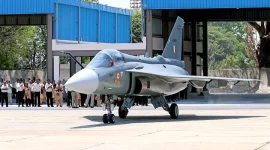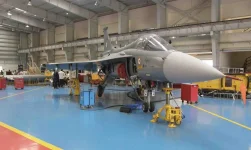
The Indian Air Force (IAF) is set to receive the first batch of 16 upgraded Tejas Mark 1A fighter aircraft this year, marking a significant milestone in bolstering India's air defense capabilities. This delivery is part of a larger order of 83 Tejas Mark 1A light combat aircraft (LCA), placed with Hindustan Aeronautics Limited (HAL) in February 2021, valued at 6.6 billion USD.
The Tejas Mark 1A successfully completed its maiden test flight in March 2024, and HAL's Chairman and Managing Director, CB Ananthakrishnan, has confirmed that the first deliveries are expected "in the next few months." HAL is committed to delivering all 16 aircraft before March 31, 2025, and the production of this upgraded variant, along with future models, is expected to be a major source of revenue for the company in the coming years.
The Tejas Mark 1A incorporates several key upgrades over its predecessor, the Tejas Mark 1. These include an active electronically scanned array (AESA) radar, replacing the older manually scanned array radar, and a new electronic warfare (EW) system with integrated protection jammers and mission computers.
Additionally, the Mark 1A will be equipped with next-generation air-to-air missiles, including the indigenous Astra missile and the advanced short-range air-to-air missile (ASRAAM) from MBDA. The integration of air-to-air refueling capability will significantly extend the aircraft's range.
The cockpit of the Tejas has also been modified to meet anthropometric requirements, ensuring compatibility with 90% of IAF pilots.
While these upgrades represent a substantial improvement, the Tejas Mark 1A will still require further adjustments and testing before it is fully operational. Some integrations related to the fighter's armament, such as the firing of twin ASRAAM missiles, are still pending.
Currently, the two Tejas Mark 1 squadrons in service are stationed in Sulur, near Coimbatore in southern India. As the IAF commissions more Tejas squadrons, particularly the more advanced Mark 1A and Mark 2 variants, these fighters are likely to be deployed along the Chinese and Pakistani borders, reflecting India's evolving military strategies.


